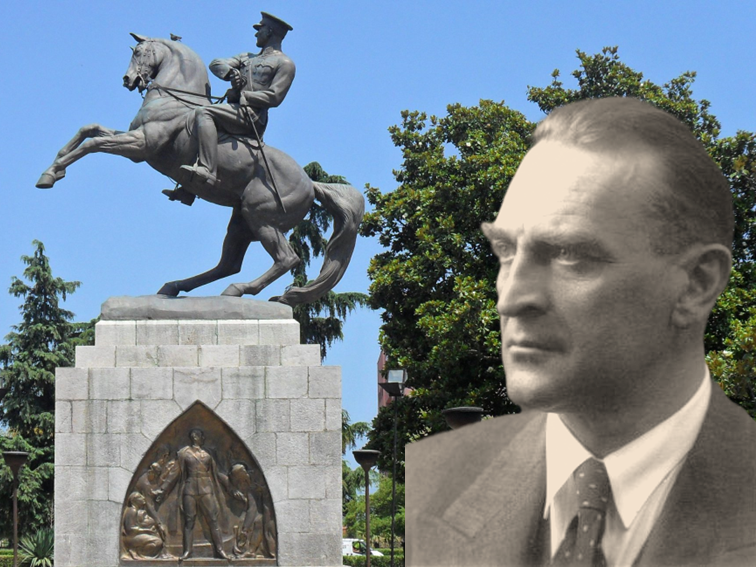The sculptor who most influenced the monument culture in Turkey: Who is Heinrich Krippel?
Until 1938, national monuments made by Austrian artist was opened with great ceremonies in many cities of Turkey. Krippel traveled from Vienna to Turkey regularly for thirteen years.

He was born on September 27, 1883 in Vienna, Austria. He received his education at the Vienna Academy of Fine Arts between 1904-09, where he studied especially with Hans Bitterlich and Edmund Hellmer.
After his education, he took a research trip to Italy and Greece, which influenced his future sculpture work. While he participated in the First World War as an artillery officer, he later re-dedicated himself to art by working as an independent sculptor.
In 1925, Heinrich Krippel received the task of making statues of Mustafa Kemal Atatürk in Istanbul and Ankara in an international competition. He painted portraits of great politicians and various monuments in Turkey, where he stayed until 1938.
Heinrich Krippel (27 September 1883 – 5 April 1945) was an Austrian sculptor, painter, chalcographer and illustrator. He is best known for his creation of monumental statues of Mustafa Kemal Atatürk in Turkey. He was educated at Academy of Fine Arts Vienna between 1904 and 1909.
He lived in Vienna until his death on April 5, 1945.
Works
* Sarayburnu Atatürk Statue (3 October 1926)
* Konya Atatürk Statue (29 October 1926)
* Ankara New Day/Nation Victory Monument (24 November 1927)
* Samsun Honor Monument (January 15, 1931)
* Afyonkarahisar Victory Monument (24 March 1936)
* Ankara Seated Atatürk Monument (1938)
Heinrich Krippel made the first important Atatürk statues and the national monuments of the Republic of Turkey. In this way, he was not only a pioneer of public, state-related art at the political level in Turkey, but also had a significant impact on monument culture in Turkey.
Austrian Krippel first came to Turkey in 1925 after winning the competition for the Victory Monument in Ankara.
After that, he designed and developed cavalry statues, tribal statues, and sculpture groups for the cities of Istanbul, Konya, Samsun, and Ankara.
Until 1938, national monuments made by Austrian artist was opened with great ceremonies in many cities of Turkey. Krippel traveled from Vienna to Turkey regularly for thirteen years. The artist produced his works in his workshop in Vienna and had them cast at the United Mining Enterprises (Vereinigte Metallwerke) in Vienna.
The Austrian sculptor was also hosted in Atatürk's mansion during his stay in Turkey; Atatürk served as a model for the artist for his own monuments, including the statue in Sümerbank.
In 1926, Krippel's first Ataturk monument in the Republic of Turkey, depicting the founder of the state, Mustafa Kemal Ataturk, as a strong political leader in civilian clothes, was opened on Sarayburnu Hill in Istanbul.
With the Sarayburnu statue, Krippel established the "civilian Atatürk" model, which he also followed in the Atatürk statue he made for Sümerbank in Ankara, designed by Martin Elsässer. The portrayal of Atatürk as a civilian, initiated by Krippel, initially caused controversy, but this visualization example It did not prevent its entry into Turkish monument culture.
Here is the image with which Atatürk often presented himself to the public: the image of an elite politician who did not differ in any way from the political representatives of Western democracies in terms of appearance.
Krippel's Ataturk monument was made from hewn stones and shows Ataturk, the founder of the state, sitting on a throne-like seat high above the central hall. Ataturk sits with his arms leaning on the armrests of this chair and his legs angled.
His gaze is directed towards the distance, towards the right. The words "we believe and we do" in the inscription engraved at the bottom of the monument probably draw attention to the economic policy of the Kemalist administration.
